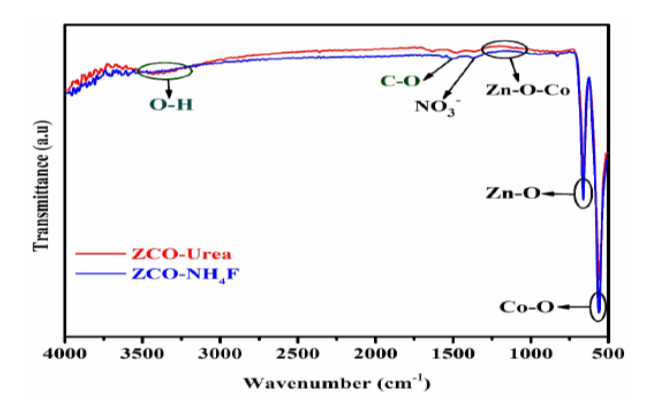


Indian Journal of Science and Technology
Year: 2021, Volume: 14, Issue: 7, Pages: 676-689
Original Article
Kumcham Prasad1, Gutturu Rajasekhara Reddy1, Borelli Deva Prasad Raju2*
1Department of Instrumentation, Sri Venkateswara University, Tirupati, 517502, India
2Department of Physics, Sri Venkateswara University, Tirupati, 517502, India.
Tel.: +919440281769
*Corresponding Author
Tel: +91-9440281769
Email: [email protected]
Received Date:05 November 2020, Accepted Date:04 February 2021, Published Date:08 February 2021
Objectives: To develop the microstructures of rod-shaped ZnCo2O4 (ZCOUrea) and hexagonal-shaped ZnCo2O4 (ZCO-NH4F) through the change of surfactants such as urea and NH4F in the reaction and to investigate the physicochemical and electrochemical properties for high-performance supercapacitors. Methods: The structural and morphological characteristics of two prepared samples were analyzed through X-ray diffraction analysis (XRD), Scanning electron microscope (SEM) analysis, and Transmission electron microscope (TEM) analysis, respectively. The electrochemical performance was evaluated using Cyclic voltammetry (CV), Galvanostatic charge-discharge (GCD), and Electrochemical impedance spectroscopy (EIS) analysis. Findings: The crystalline nature and phase purity of the as prepared samples were confirmed from XRD, and the structural parameters such as lattice parameter (a), microstrain (e ), dislocation density (d ), cell volume (v), and average crystalline size (D) for both the samples were determined. The SEM and TEM analysis revealed morphological characteristics of the samples. The electrochemical analysis of ZCO-Urea and ZCO-NH4F electrodes were tested for supercapacitor application in 1M of aqueous KOH electrolyte and exhibit an areal capacitance of 31 mF cm-2, and 41.43 mF cm-2, respectively, obtained at a current density of 10 mA cm-2. And also showed outstanding cyclic stability over 1000 charge-discharge cycles. Applications: The simple and inexpensive method of synthesized surfactant-assisted morphological transformation of ZCO microstructures will introduce new directions in this emerging energy field.
Keywords: ZnCo2O4; Urea; NH4F; areal capacitance; supercapacitors
© 2021 Prasad et al.This is an open access article distributed under the terms of the Creative Commons Attribution License, which permits unrestricted use, distribution, and reproduction in any medium, provided the original author and source are credited. Published By Indian Society for Education and Environment (iSee)
Subscribe now for latest articles and news.